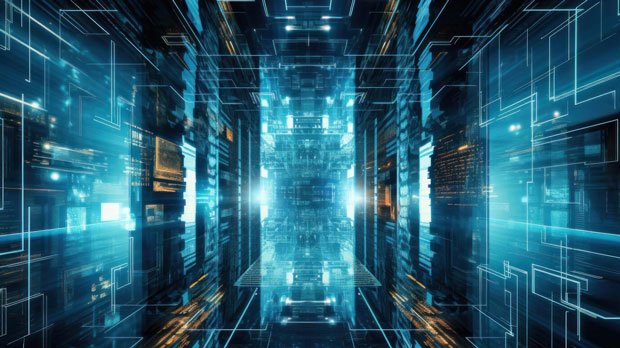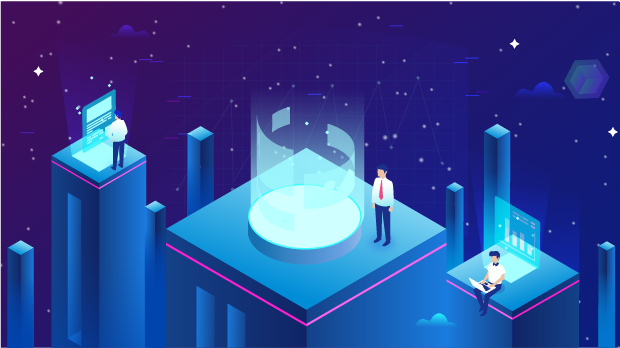Squid Proxy Server vs PyProxy S5, Residential Proxies in Crawler Projects
In the world of web scraping, choosing the right proxy server is essential to ensuring efficiency, anonymity, and scalability. Among the most commonly used options are Squid Proxy Server and PYPROXY S5, as well as residential proxies, which have gained prominence for their ability to mimic real user traffic. This article delves into the differences between Squid Proxy Server and pyproxy s5, providing a comprehensive analysis of how residential proxies are applied in web scraping projects, their advantages, and practical considerations for businesses and developers. Introduction to Proxy Servers in Web ScrapingWeb scraping has become an indispensable tool for gathering data across various industries, including marketing, research, and finance. However, scraping websites without using proxies can lead to IP bans, CAPTCHAs, or throttled requests, which can significantly disrupt data collection. Proxy servers act as intermediaries between the scraping bot and the target websites, masking the real IP addresses and thus ensuring that scraping operations remain undetected and uninterrupted.The main types of proxies include data center proxies, residential proxies, and mobile proxies. Residential proxies are particularly valuable for web scraping as they use real IP addresses assigned to physical devices, making the traffic seem more authentic to websites.Understanding Squid Proxy ServerSquid Proxy Server is an open-source caching and forwarding HTTP web proxy. It has been widely used in a variety of industries for improving web browsing speed and efficiency by caching content. In web scraping, Squid can help by managing requests and distributing them across multiple IP addresses, though it is typically used with data center IPs rather than residential ones.One of the strengths of Squid Proxy Server is its scalability. It can be set up to handle a large volume of requests, and it also supports HTTP, HTTPS, FTP, and more, making it versatile. However, Squid proxies often face challenges when it comes to bypassing sophisticated anti-scraping mechanisms, as many websites have measures to detect data center IP addresses, which are often flagged as suspicious.Despite its limitations, Squid is still a reliable option for certain scraping tasks, particularly when the target websites do not employ aggressive anti-scraping technologies. It is also ideal for situations where cost-efficiency is crucial, as it is an open-source tool with no licensing fees.Exploring PyProxy S5PyProxy S5 is a Python-based proxy server that uses the S5 protocol. This proxy protocol allows for highly anonymous proxy connections, which is beneficial for maintaining privacy and security in web scraping projects. PyProxy S5 is commonly used in scenarios where high anonymity and privacy are required, as it obfuscates the user’s identity more effectively than traditional proxies.One of the main advantages of PyProxy S5 is its ease of integration with custom scraping solutions. Developers can easily configure and manage PyProxy S5 within their scraping scripts, making it highly adaptable to various projects. It also supports authentication mechanisms, which further enhance its security and reliability.However, PyProxy S5 is often more resource-intensive compared to other proxy servers, and its setup may require a higher level of technical expertise. While it is more effective in bypassing security mechanisms such as IP bans and geo-blocking, it may not be the most cost-effective solution for large-scale scraping operations.Residential Proxies in Web Scraping ProjectsResidential proxies are becoming increasingly popular in the world of web scraping due to their ability to provide real, geo-located IP addresses. These proxies are assigned to physical devices like smartphones, laptops, and home routers, making them appear as if they are browsing from a legitimate user’s network. This makes it much harder for websites to detect and block web scraping activities, as residential IPs are associated with real internet users.The main advantage of residential proxies in web scraping projects is their ability to bypass sophisticated anti-bot mechanisms, such as CAPTCHA tests and rate-limiting, which typically target data center IPs. Residential proxies also allow for distributed scraping across different geographical regions, enabling businesses to access region-specific data that may be otherwise restricted or unavailable.Moreover, because residential proxies are less likely to be flagged or blocked, they can be used to scale scraping operations without worrying about IP bans. This makes them an ideal choice for businesses that need to collect large amounts of data over extended periods, such as for market analysis or competitive intelligence.However, residential proxies come with their own set of challenges. They tend to be more expensive than data center proxies, as the cost is usually higher due to the limited availability and the need to rent real residential IPs. Additionally, the use of residential proxies can sometimes raise ethical concerns, as they often involve rerouting traffic through individuals’ home networks.Advantages of Residential Proxies Over Squid Proxy Server and PyProxy S5While Squid Proxy Server and PyProxy S5 offer distinct advantages in specific scenarios, residential proxies provide several key benefits that make them particularly well-suited for web scraping projects:1. Higher Anonymity and Security: Residential proxies provide real IP addresses that are much less likely to be flagged or blocked by websites, which often target suspicious data center IPs. 2. Bypassing Anti-Bot Mechanisms: Residential proxies excel at bypassing CAPTCHAs, rate limits, and IP bans. They can simulate human browsing behavior, reducing the likelihood of detection.3. Geographical Targeting: Residential proxies allow businesses to scrape data from various geographic regions, enabling access to localized content that may be restricted for users in different areas.4. Scalability: Residential proxies enable large-scale scraping without the risk of getting blacklisted, making them ideal for businesses requiring large volumes of data.5. Cost vs. Benefit: While residential proxies are more expensive than data center proxies, they are often a more cost-effective solution for long-term scraping projects, as they reduce the need for constant IP rotation and mitigate the risk of bans.Practical Considerations for Choosing the Right Proxy for Web ScrapingWhen selecting a proxy for a web scraping project, businesses and developers should carefully assess the nature of the project, the type of websites being targeted, and the resources available. Here are some key factors to consider:1. Scale of the Project: If the project involves scraping large amounts of data or accessing multiple websites, residential proxies are often the best choice due to their scalability and reduced risk of being blocked.2. Budget Constraints: While residential proxies are more expensive, businesses with budget constraints may opt for Squid Proxy Server or PyProxy S5, especially if their scraping needs are limited to smaller-scale projects or websites with less stringent anti-scraping measures.3. Target Websites: For websites that employ aggressive anti-bot mechanisms, such as CAPTCHAs and IP rate-limiting, residential proxies are the most effective choice. Squid Proxy Server and PyProxy S5 may still be useful in cases where the target sites are less strict.4. Technical Expertise: Squid Proxy Server and PyProxy S5 require a certain level of technical expertise to set up and maintain. Residential proxies, on the other hand, are generally easier to integrate with scraping scripts and offer a more user-friendly experience.Conclusion: Selecting the Right Proxy for Your Scraping NeedsIn conclusion, the choice between Squid Proxy Server, PyProxy S5, and residential proxies largely depends on the specific requirements of the web scraping project. For large-scale, long-term scraping operations that require high levels of anonymity and the ability to bypass sophisticated anti-bot measures, residential proxies are often the most effective and reliable option. While Squid Proxy Server and PyProxy S5 are useful for certain scenarios, residential proxies offer a level of security and scalability that makes them an ideal choice for businesses looking to gather large amounts of data without running into roadblocks.By carefully assessing the needs of the scraping project and choosing the right proxy type, businesses can ensure that their data collection efforts remain efficient, secure, and cost-effective.
2025-03-03























































